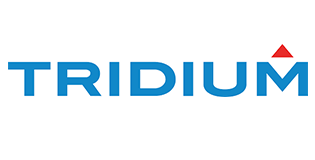Take Control:
We employed emerging technology on an innovative project at a large London office block, cutting energy bills by more than £100,000 within two years and dramatically improving occupant comfort.
The challenge:
The London headquarters of the Financial Times newspaper is located adjacent to Southwark Bridge on the banks of the River Thames. Arranged over seven storeys, the glass-fronted structure is home to an 1100-strong workforce which runs one of the world’s foremost business media sources.
As part of an ongoing drive to improve building performance, reduce carbon and cut energy costs, the company has been working closely with building maintenance and engineering services provider Optimum to implement a range of initiatives. Ensuring that all building services are functioning as efficiently as possible is critical to achieving the results required under this project; at a facility of this size and complexity, however, boosting building performance is no easy task – especially when the structure’s Building Energy Management System (BeMS) relied on different technologies of different ages
What we did:
Inefficiencies in building services operation can arise from a number of factors, such as poor commissioning, software issues, changes which have been made over time without properly analysing their effects or malfunctioning equipment. The first place to start was the BeMS.
“Interrogating the BeMS can reveal how, why and when plant is operating – such as chillers, boilers and fans,” explains Andy Horrigan, Energy Manager at Chartwell Energy Solutions Limited, part of the Chartwell Group. “We needed to understand exactly what was going on before devising improvement strategies.”
As specialists in installing, integrating and optimising BeMS in complex environments, we’d already worked with Optimum on an array of different projects prior to this one. The relationship we’d developed meant that Optimum trusted us to suggest the best ways to tackle the issue – but this time, we had something new to bring to the table.
“In 2013, we were tracking the emergence of a new platform called Demand Logic,” says Andy. “This is a plug-and-play system which collects data directly from a facility’s BeMS. Within a week, it could offer a complete snapshot of how the building services were operating. It appeared to be the perfect tool with which to analyse a building as large and multifaceted as the FT’s London home.”
Demand Logic comprises hardware (a device plugged into the BeMS control panel which collects Data and broadcasts it to the cloud) and software (a web-based interface which collates that data into a central, secure location).
“The Demand Logic system allows us to pinpoint exactly where the issues are – it’s like having an engineer in a box, sat on site 24 hours a day to watch what’s going on,” Andy says. “At the FT building, we could piece together a picture within a week, built from 25,000 data points throughout the network. Once we’ve got a clear snapshot of what’s actually happening, we can then start asking questions based on our engineering expertise and work out whether issues are likely to be centred on software or hardware.”
After analysing the data captured by Demand Logic, our team visited the site and worked closely with FT and Optimum personnel to confirm findings. “Reconfiguring the software is often the fastest way to achieve significant efficiency gains in the system,” says Andy. “However, because the different BeMS technologies had been installed over a phased upgrade of the control system, the software that we needed to rewrite wasn’t the same on the older components. The devices had all been supplied by Trend, however, with whom we have a very strong relationship. Trend provided our team with specialist training and tools to equip us to deal with the older parts of the system. This proved a particularly cost-effective method: instead of replacing parts, we could simply tweak the existing system to yield the results our clients wanted.”
The result:
Two years after we completed our six month involvement, Optimum estimates that energy use has been cut by around 2,290kWh/day average, translating to a total saving in energy of more than £100,000 within the first two years. Further, occupant comfort has been dramatically improved, with complaints about the office being too hot or too cold falling by 50% since the project’s completion.
“The Demand Logic platform enabled us to work collaboratively with Chartwell to identify opportunities to further improve the performance of the building,” says Keith Grimwood, building manager at Optimum. “Data from the VAV units was particularly useful, allowing us to identify and correct specific issues without disrupting occupants. We were able to deliver a more efficient and effective service.”
“The long term data captured by the Demand Logic platform meant we could identify issues that would be harder to find using conventional approaches,” says Alan King, director at Chartwell Energy Solutions Limited. “In particular it enabled us to see how the building was performing out-of-hours, overnight and at the weekends.”
“This was a bold project using new technology,” Andy explains. “The commitment to exploring innovative solutions and technology was clearly evident from both Optimum and the teams at the Financial Times. As well as the results already achieved, the work we’ve done has given the FT onsite teams more confidence in their building and in their BeMS, which will yield benefits for years to come.”















